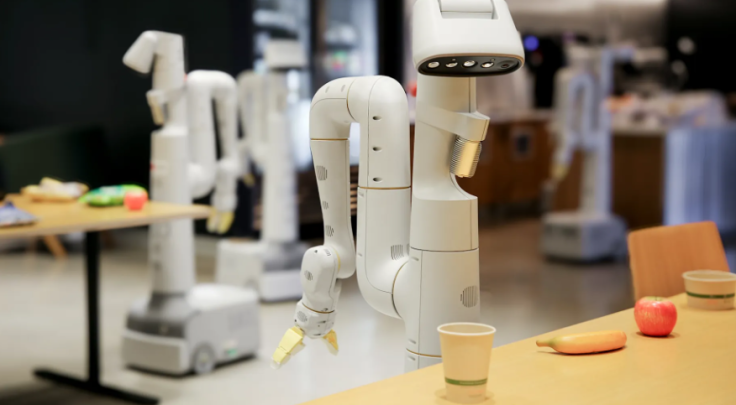Google DeepMind unveiled three new advances in robotics: AutoRT, SARA-RT, and RT-Trajectory, including a Robot Constitution that provides safety-focused prompts to avoid harmful tasks using AI robots.
The constitution was inspired by Isaac Asimov's Three Laws of Robotics which shed light on preventing injuries to a human being.

Google Improves Real-World Robot Data Collection and More
The DeepMind robotics team revealed its progress in making robots more efficient by making them decide faster and have better understanding and navigation within their environment. AutoRT, SARA-RT, and RT-Trajectory are created to enhance data collection, speed, and generalization of the robots.
The AutoRT is capable of creating a system that can control robots to gather data. It can direct multiple robots to carry out different tasks. Meanwhile, the SARA-RT is responsible for faster learning even with complex tasks.
Lastly, the RT-Trajectory enables robots to create movements by watching human demonstrations of the task. It can also accept hand-drawn sketches and be adapted to different robot platforms.
Google DeepMind Prioritizes Safety Protocols on Robotics
While the company believes in the advancement and integration of robots in daily life, Google DeepMind emphasizes the need to develop responsibility in creating such advanced technology.
The Auto-RT is an early demonstration of autonomous robots in real-world use in the future and while it has a lot of potential the Robot Constitution was integrated as its LLM-based decision maker.
The Three Laws of Robotics states that a robot "may not injure a human being," this means that robots must be used to complete tasks that involve humans, animals, sharp, objects, or electrical appliances.
"We will continue to tackle challenges in robotics today and to adapt to the new capabilities and technologies of more advanced robotics," the company promised.
Related Article : Google Introduces Its Most Powerful AI Model, 'Gemini'









